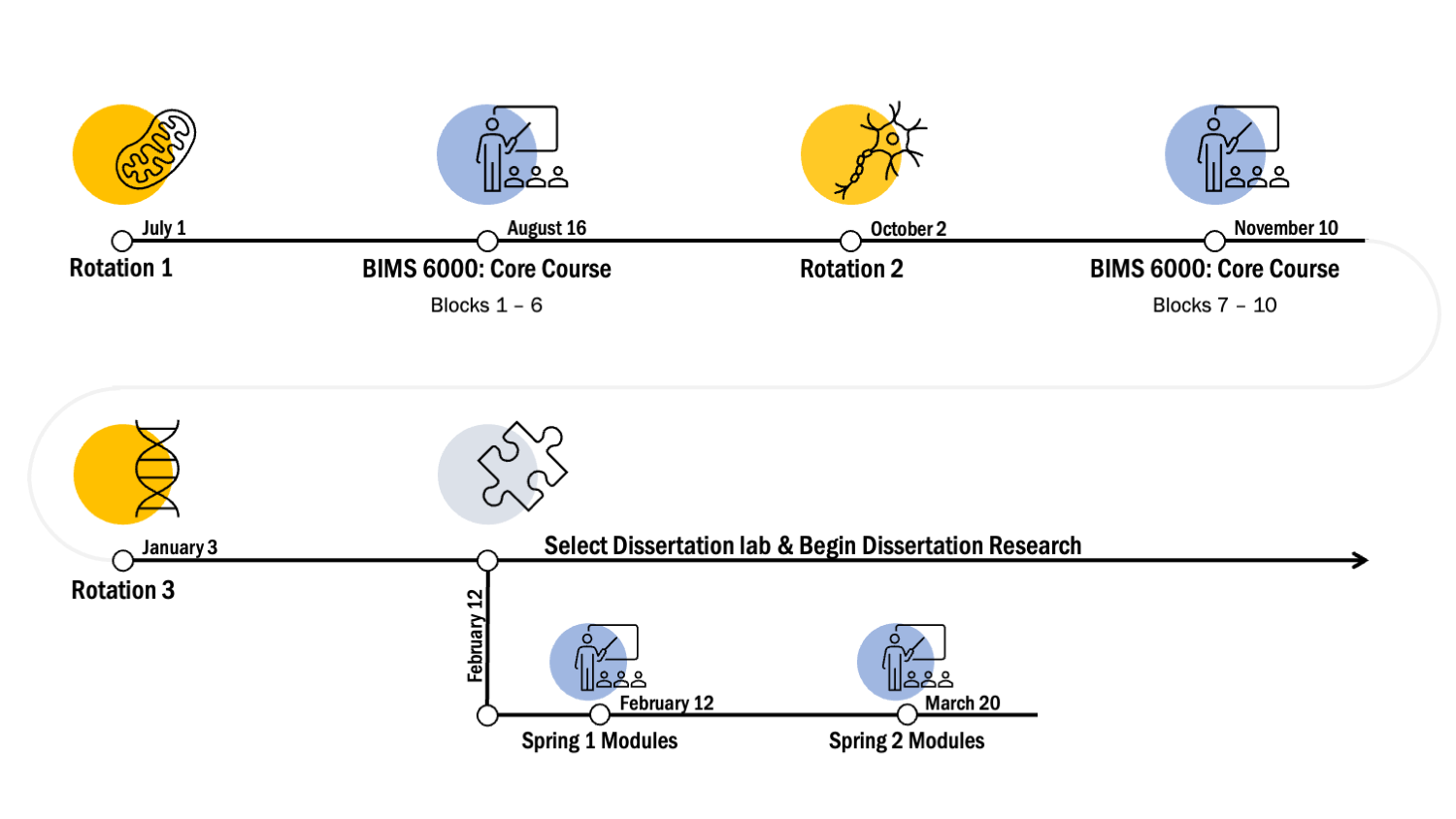How Does BIMS Work?

Typical First Year
Each academic year, approximately 45 students are admitted to the University of Virginia as a class, or cohort, of Biomedical Sciences (BIMS) doctoral students. First year students typically start the program in early July and can focus on their summer lab rotation (sans coursework) while they become acclimated to UVA and Charlottesville. They work with their first year advisor to ultimately select three 6-week lab rotations with potential advisers chosen from a list of over 200 faculty mentors affiliated with the BIMS program.The cohort begins an immersive 12-week core course in mid-August and work their way through thematic blocks from “Protein Structure and Function” to “Cytoskeleton, Cell Adhesion, Migration, and Polarity”, before shifting back to a second lab rotation in early October. The core course wraps up in November and December by covering additional themes from “Electrical and Chemical Signals in Cellular Physiology” to “Metabolism in Health and Disease”.
After Winter Break, first-year students complete their final rotation and, with guidance from their first year advisor and many others, select a thesis adviser and a PhD degree program. This pivotal selection will drive the remainder of their PhD studies, starting with advanced coursework to complete their spring semester. Students select advanced courses based on degree requirements, their area of interest, and intellectual curiosity, from a menu of over 40 6-week advanced modules.
The School of Medicine and BIMS community celebrate the momentous occasion of lab selection and moving to the next phase of their graduate careers with our annual Lab Coat Ceremony in late April. The event is well attended by family and friends who cheer as each student is recognized and presented with a personally embroidered lab coat (a gift from the UVA Medical Alumni Association).
Description of Overall PhD Training
The goal of our graduate training programs is to provide students the necessary knowledge, intellectual capabilities, and technical skills to conduct outstanding state-of-the-art research in a wide range of exciting biological and biomedical areas.
Ph.D. training begins with an immersive 12-week core course, supplemented by specialized 6-week electives in research areas of interest (i.e., Cancer Biology, Genetics). Students also attend weekly journal clubs, research-in-progress talks, and seminars given by preeminent guest researchers from around the world. A distinctive feature of BIMS is that all students gain a keen appreciation of how their research findings may advance the understanding of human diseases and possibly be translated into improved clinical care. Advanced training may also include participation in one of many NIH sponsored disease-oriented training programs.
Second year students begin work on their thesis projects and prepare for their proposal defense. All students must pass a Ph.D. candidacy exam given by their degree program at the end of their second year, prior to beginning full time dissertation work.
Training for the third year through degree completion is largely done under the guidance of the Ph.D. thesis adviser and thesis committee, although given the multidisciplinary nature of biomedical research, an increasing number of students elect to do research with a primary mentor as well as a co-mentor(s). Each mentor plays an integral role in fostering the student’s professional development and success.
Regardless of degree selection, BIMS Ph.D. training is individually tailored and typically requires 4-5 years to complete.
